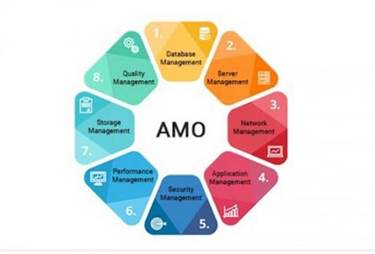Let’s break down the top cloud integration platforms, as rated by trusted review site G2. The emergence of this sector led to new cloud-based business process management tools that do not need to build integration layers – since those are now a separate service. However, these tools cannot generally communicate to share data or business policies, which can result in duplicated data and inconsistent business practices. Through application integration, an organization can link applications to share data and automate broader business practices. Microsoft Azure Logic Apps – allows administrators to automate workflows that integrate apps and data across cloud services and on-premises systems.

Since information is more accessible, teams can easily and securely share data. This data can be used to influence projects, strategies, decisions, and more. Plus, cloud-based collaboration empowers employees at the growing number companies that offer remote work opportunities. Companies are better equipped to adapt to customer and market demands when using the cloud. This is because scaling with the cloud is much easier and more flexible than scaling with on-premise, physical hardware.
Follow IBM Cloud
Cloud integration eliminates the problem of duplicate data as all data is updated and synced automatically. With the assistance of a GUI wizard, users can alter, normalize, and denormalize their data. For ETL tasks, IRI Voracity creates thorough reports that allow users to trace all activity and log all problems. It is very adaptable and adjustable, allowing users to select and map data according to their own requirements.
Extreme moves cloud-based network management to the edge – Network World
Extreme moves cloud-based network management to the edge.
Posted: Wed, 10 May 2023 23:43:00 GMT [source]
But, using cloud service integration solutions, you can effortlessly transform and load this data to the desired cloud platform. As the name suggests, cloud data integration means unifying all your data stored in public, private, or hybrid clouds into an integrated whole. We create a business-oriented service catalog for legacy applications to enable seamless integration with hybrid cloud systems.
Cloud Integration Platform Categories
Cloud application integration and automation can improve efficiency and visibility in your organization. It’s also flexible and highly scalable, which means it can grow as your business does. Whether you want to modernize your legacy systems or integrate hybrid environments, you can do it with OpenLegacy一and future-proof your business. OpenLegacy also integrates seamlessly with iPaaS platforms like Boomi, Workato, and Talend, enhancing your experience by providing superior access to on-premise data and systems. OpenLegacy uses patented API integration technology to bring the speed, simplicity, and standardization of the cloud to enterprises with on-premises systems. With a microservice architecture, you can swiftly adapt to changing market needs and build new products and services for a fraction of the time and cost.
- Creating connections – select or build adapters for your applications to communicate with the glue layer.
- Businesses, analysts, and scientists — everyone can benefit from this data pipeline platform for using data effortlessly.
- According to an IDG survey, enterprise data volumes are increasing by 63% on average, with 90% of the surveyed companies using cloud data warehouses for data storage.
- As per the Accelerate State of DevOps 2019 report survey, 80% of the respondents said that the primary application or service they supported was hosted on some kind of cloud platform.
- The provider provides API connectivity to a diverse range of on-premise and cloud-based apps and systems, allowing enterprises to better their programs through integration.
- Semrush is an all-in-one digital marketing solution with more than 50 tools in SEO, social media, and content marketing.
This makes them perfect for businesses that operate in multi-cloud and hybrid cloud environments. The intricacy of your Data Integration approach will increase as your company expands. Make a note that different teams are constantly adding streams, web-based programs, and data sources to your business. As a result, it’s necessary to pick a solution that can expand with you and support your growing array of data sources.
What is iPaas, and How it Helps with Cloud Integration
Major companies, financial institutions, and even political institutions are all at grave risk from an ever-growing list of online threats — including digital information theft, ransoming, and destruction. Without proper security, an organization is at risk of even worse things than bad business intelligence. Nurture and grow your business with customer relationship management software. Many organizations struggle to manage their vast collection of AWS accounts, but Control Tower can help. Many companies big and small are building quantum computing capabilities in the software and hardware space. Typically, IT can complete some integration tasks, such as an automatic synchronization, fairly quickly.

That is why a cloud infrastructure might find it challenging to sync with various external systems when there is a need to integrate data stored on numerous cloud platforms. For example, the business development team can view the sales data inside the BI tools. Users can use a single login for multiple integrated application programs, which is a very convenient way to access needed information. These platforms are incredibly useful if you have multiple apps that you need to connect to the cloud or vice-versa. Cloud integration strategy needs to address operational complexities of business services in a hybrid landscape.
A look at cloud integration, what it entails and how you can start planning your path.
Some cutting-edge organizations are leveraging function platform as a service to deliver a customized set of integration capabilities. Using this approach requires substantial skill with function-oriented software development and cloud-native architectures. Another factor to consider when moving to cloud-native solutions is there’s no standard integration process. Likewise, certain apps use SOAP-based APIs for security and others use OAuth2. It provides pre-built connectors to ease the difficult process of connecting data and applications across cloud platforms and legacy systems.

